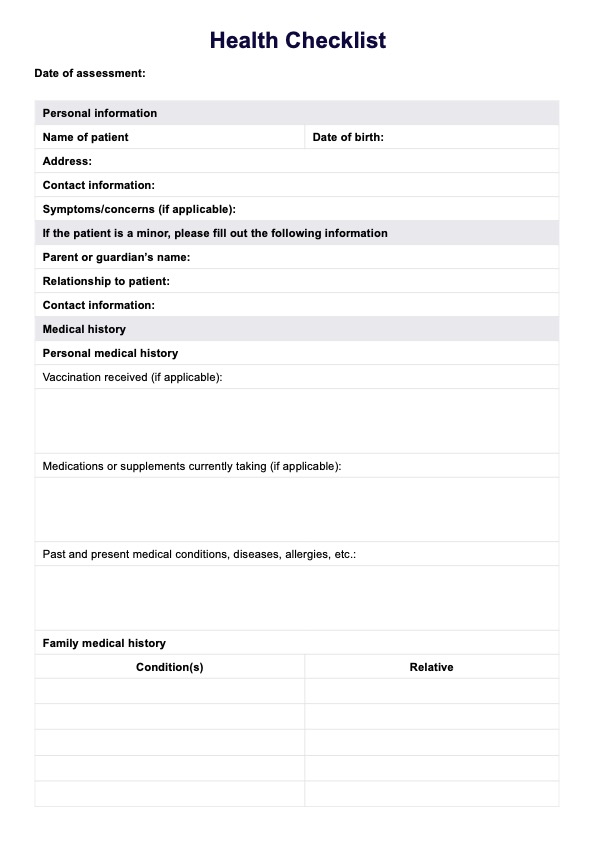Positive lifestyle factors include maintaining a balanced diet, engaging in regular physical activity, ensuring adequate sleep, managing stress effectively, and avoiding harmful habits such as smoking and excessive alcohol consumption. These factors contribute to overall health and well-being, reducing the risk of chronic diseases.

Health Checklist
Discover how to enhance patient care with our Health Checklist guide. Includes practical examples and a free PDF download for healthcare professionals.
Health Checklist Template
Commonly asked questions
Staying healthy involves eating various nutritious foods, being physically active every day, getting sufficient rest, staying hydrated, managing stress, and keeping up with regular health check-ups and screenings. Adopting these habits supports physical and mental health.
A health checklist can be instrumental in managing chronic conditions by providing a structured way to monitor daily health behaviors, medication adherence, and appointment schedules. It encourages regular health screenings and tests critical for early detection and management of conditions such as diabetes, heart disease, and high blood pressure.
A health checklist can help individuals better control their condition, minimize complications, and enhance their quality of life by focusing on preventive care, lifestyle modifications, and routine monitoring.
EHR and practice management software
Get started for free
*No credit card required
Free
$0/usd
Unlimited clients
Telehealth
1GB of storage
Client portal text
Automated billing and online payments











